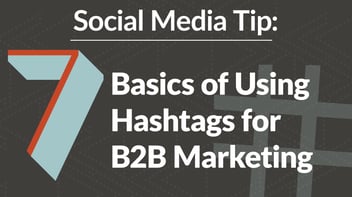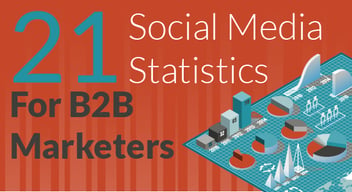Should Your B2B Use Social Media Advertising?

Integrated marketing strategies for B2B brands need to take an all-encompassing approach to reaching target audiences.
While organic social media, blog posts and other forms of inbound content are valuable in reaching audiences with information they want when they want it (aka when they search for it), there is a place for paid social media advertising in most B2B strategies. In fact, 83 percent of B2B marketers are using it.
Why? Reach. Targeting. Website traffic. And those are just three of the advantages identified in the infographic from Safefrog.

Let’s start with reach. Sagefrog points out the 2.85 billion Facebook users, 1 billion+ Instagram users and 2 billion+ YouTube viewers. But they forgot to mention B2B’s most natural social media home: LinkedIn. LinkedIn is used by nearly all B2B marketers (97 percent, in fact, according to these stats). And while those Facebook numbers are filled with people who may not be your target market (including everyone from your 15-year-old nephew who simply searches Marketplace for used video games to your 85-year-old grandmother who hasn’t quite conquered the difference between a post, a comment and sending a Messenger message), nearly half of all LinkedIn users are high-level decision-makers. That is the kind of reach you need.
If you already have a robust organic social media strategy, you may wonder why you would want to use precious budget with advertising or boosted posts. One word: Targeting. The targeting available for advertising on social media platforms means you are no longer spending money to simply blast your message out to all those users (like your nephew and grandma, or even the recent college grad in a totally different field on LinkedIn). Instead, your spending is focused on reaching only those users who meet specific parameters you set: geographic location, industry or title, age, specific interests, etc. Pull out your customer personas and drill down to levels that focus your social media ad budget on those users most likely to become customers.
Website traffic is a third reason to use social media advertising. Your targeted social media advertising can be used to drive visitors to your site by directly promoting your lead generating offers: webinars, ebooks, reports, free trials or newsletter subscriptions. The more traffic your site receives, the higher it will rank in SERP results. Plus, each visitor is a potential lead and potential customer.
Each of the 6 steps Sagefrog recommends in the infographic are topics we’ve discussed many times. Want to learn more? Check out these links.
-
Understand your business goals: In other words, do the data work and crunch the numbers to know what you need to achieve with each element of your integrated marketing strategy. My video tells you how: Do the Math to Calculate Marketing Goals.
-
Know your target audience: I mentioned buyer personas above – these are the descriptions of your ideal customers used to guide your messaging, content, channel and promotion decisions. If you don’t already have them, use this format today: Create a Great Customer Persona.
-
Develop a comprehensive strategy: A comprehensive integrated marketing strategy doesn’t only consider social media, but also how social media, both organic and paid, fits into an overall strategy that crosses channels. Use our template to plan an entire year of campaigns, covering thought leadership, PR, social media, website content and more: Campaign Planning Calendar Template.
-
Create engaging content: Whether you are creating videos for your website, downloadable reports for lead generation or social media advertising, great content has a few common characteristics: It tells a story (such as how to solve a problem or a client’s success), it is useful for readers/viewers, it is shareable, it is findable and it is technically sound. Does your content make the grade?
-
Test your ads: A little A/B testing can be a key way of determining what works and what doesn’t in terms of achieving your social media advertising goals.
-
Track KPIs: Understanding the performance of your social media advertising, alongside other marketing metrics, is key to making improvements with each new campaign.
Are you ready to incorporate social media advertising into your integrated marketing strategy? Let’s talk about the best way to do so and how JONES may be able to supplement your in-house team to maximize the impact of each of your marketing and public relations channels. Schedule a time in my calendar for quick call today.
-1.png?width=1652&height=294&name=Jones(RGB)-1.png)












